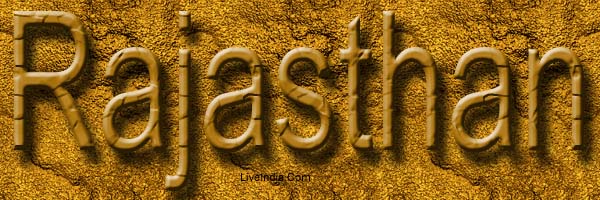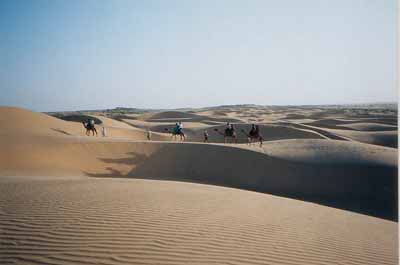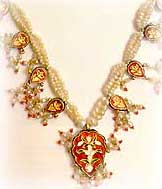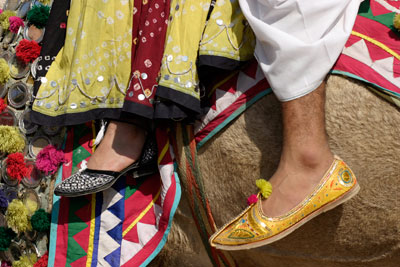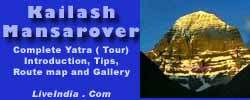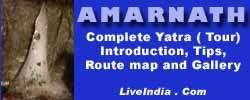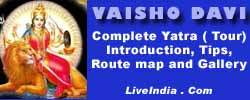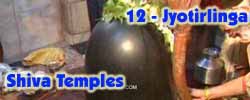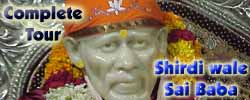| Museum
& Art Galleries of Rajasthan
RAJASTHAN
- the land of massive forts, sprawling palaces and intricately carved temples
ofcolourful tribes and brave warriors, of unrivalledform of arts and crafts,
unique dance and music traditions, is changing at rapid pace. Its vast
network of Museums in large and small towns, archaeological sites and the
recently opened museums and art galleries in the palaces of erstwhile rulers
of old states help to preserve this great heritage for posterity.
AJMER
GOVERNMENT MUSEUM : Situated in the heart of the old city and close to
the railway station the museum is housed in the beautiful fort and palace
built by the Mughal Emperor Akbar in 1570. It was here that the British
envoy Sir Thomas Roe met Emperor jahangir in 1616. What is today commonly
known as Magazine is the palace quarters where the emperors lived. After
British occupation in 1818 and during the first war of Independence in
1857 it was used as the Rajputana Arsenal by the British which gave the
name magazine.
ALWAR
GOVERNMENT MUSEUM: Housed in the old City Palace, it has a unique collection
of arms, bidri work, lacquered and ivory work, musical instruments, stuffed
animals, beautiful brass and pottery works from Jaipur, Multan, Bengal
and Ceylon, miniature paintings and Persian and Sanskrit manuscripts. The
museum is divided into three major sections, each housed in a big hall.
AMER
(JAIPUR) ARCHAEOLOGICAL MUSEUM : Located in the Dil-e-Aaram Gardens, of
Amer, the ancient capital of Jaipur, and established in 1949. Prior to
this, the excavated material from Rairh, Bairat, Sambhar, Nagar etc. and
the sculptures and epigraphs collected from various sites in the erstwhile
jaipur State were housed at Vidyadhar Gardens in Purana Chat. In July 1949
the entire collection was transferred to Dil-e-Aaram Garden, a part of
the old palace at Amer. An Art Gallery was inaugurated in 1992 in this
complex.The museum is divided into three sections.
BAIRAT
VIRAT NAGAR MUSEUM : Virat Nagar was the capital of the legendary Matsayadesli.
Frequent references of Matsayadesh have been made in the Indian epic -
the Mahabharat. In the epic period, the area around the district of Jaipur,
Alwar and Bharatpur came to be known as Matsayadesh with Virat Nagar as
its capital. The museum, although not very large has the richest collection.
The excavated material like potteries, pikkins, old coins, seals, metallic
pieces, weapons and statues are exhibited here.
BHARATPUR
COVERNAIENT MUSEUM : located in the centre of the famous Lohagarh Fort,
the Bharatpur Museum houses a rich collection of archaeological wealth
of the nearby areas as from the old Bharatpiir State. The huge palatial
building Kachahari Kalan, once the administrative block of the rulers of
Bharatpur state, was converted into a Museum in 1944. Lateron, the Kamra
Khas (personal chamber) building on the first floor was added to the museum.
It exhibits sculptures found during the excavation of old villages e.g.
Noh, Mailah, Bareh, Bayana etc. ranging from the Kuslian period.
FORT
MUSEUM, JUNAGARH FORT, BIKANER : Ganga Mahal, the imposing halls added
by Maharaja Gailga Singh, now houses the Fort Museum. It contains a fine
collection of antique Rajput, weaponry, jade handle daggers, camel hide
d17als (shields) and inlaid handguns and camel guns. Cold and silver howdahs,
jhulas, kis and a firstworld war biplane are on view. Other important objects
include a pairof drums belonging to jamblioji, the saint who predicted
the foundation of the dynasty by Rao Bika for 450 years. Photographs and
items of personal use by Maharaja Ganga Singh and miniatures are also on
view.
GANGA
GOLDEN JUBILEE MUSEUM, BIKANER : Established near the lailgarh Palace in
1937 oil the eve of the Golden Jubilee celebrations of Maharaja Gaiiga
Singh this Museum now run by the Government of Rajasthan, was shifted to
a new building in the Civil Lines in 1954. Some principal sections of the
museum are:
Maharaja
Ganga Singh Memorial · local Arts and Crafts · History·
Sculpture, Terracotta and Bronzes Armoury · Miniature Paintings
and Folk-Arts · Dr. L.P. Tessitori Memorial Section. Lithoprints
of the British Interpretation of the war of Independence 1857.
CHITTAURGARH
- FATEH PRAKASH PALACE MUSEUM : Inside the historical Chittuargarh Fort,
one big portion of the Fateh Prakash Palace was converted into a museum
in 1968. It has a great collection of sculptures. Amongst the important
ones are Ganpati (8-9th century) from Pangarh : Indra and Jain Ambica statues
from Rashmi village of podt medivial period. Also are desplayed weapons,
daggers and armoury.
DUNGARPUR
MUSEUM : A newly constructed museum named "Rajmata Devendra Kunwar State
Museum and Cultural Centre, Dungarpur" was opened to public in 1988. The
sculpture gallery of the museum throws light on the history of Vagad Pradesh
that was spread over the present areas of Dungarpur, Banswara and tehsil
Kherwara of Udaipur district.
JAIPUR
- ALBERT HALL MUSEUM : Located in the centre of the sprawling Ram Niwas
Bagh, this is the oldest Museum in the State. It was built in 1876 when
King Edward VII visited India as the Prince of Wales. It was opened to
public in 1886.
MODERN
ART GALLERY - RAM NIWAS BAGH : A small gallery in the first floor of the
Ravindra Manch Auditorium shows a selection of works by the well known
modern artists and sculptors of Rajasthan.
HAWA
MAHAL MUSEUM - JAIPUR : Just behind the beautiful Hawa Mahal(Palace of
Winds) in the adjoining Partap Mandir, a museum was setup in the year 1983.
Preserved here is the sculptural heritage collected from Ganeshwar, Virat
Nagar, Raid, Sambhar and Nagar.
MAHARAJA
SAWAI MAN SINGH II MUSEUM, JAIPUR : Located within the City palace complex
and nested amidst old buildings, temples and the palace quarters, this
museum was founded in 1959 by Maharaja Sawai Man Singh II. It exhibits
ancestral collections built up by the successive rulers of Amer and Jaipur.
JAISALMER
FOLKLORE MUSEUM :A well organized museum divided into six sections and
has a rich collection of paintings, photographs, costumes, hairstyles and
jewelry, utility articles of rural life, camel and horse decorations, fossils,
ornamental arches, as well as articles connected with folk and cultural
lifestyles.
JAISALMER
- GOVERNMENT MUSEUM : The Govt. museum in Jaisalmer is situated on Police
Line Road near Moomal Hotel. It was opened in 1984. It houses a large collection
of wood and marine fossils and gives an insight into the geological past
of the area. Sculptures from the ancient townships of Kiradu and Lodurva
dating back to the 12th century pulsate with youth and grace and depict
the skill of the time.
JAHLAWAR
- GOVERNMENT MUSEUM : Situated in the old Garh Palace near Bhawani Natya
Shala, is the Goverment Museum. The sculptures and architectural fragments
of the 8th century city of the Chandravati and sculptures and epigraphs
from the Jhalrapatan region fill its galleries.
JODHPUR
- GOVERNMENT MUSEUM : Located in the Umaid gardens on High Court Road,
it has a large and fairly interesting collection. There are many stuffed
animal, inclusing a number of desert birds in two glass cases, each with
a thorn bush. The military section includes cumbersome wooden biplane models
and an extraordinary brass battelship.
JODHPUR-
MEHRANGARH FORT MUSEUM : An excellent museum with rare and interesting
artifacts, textiles, paintings, transport items etc. laid out with utmost
care and thought.The Palanquin and Howdah Galleries display a superb collection
of old and costly specimens of great historical value.
JODHPUR
- UMAID BHAWAN PALACE MUSEUM: The ruling family of Jodhpur has recently
converted a part of the gigantic Umaid Bhawan Palace as a palace museum.
Items on display are rare collection of rocks, watches, fine china, ornate
mirrored furniture, glass and crystal ware, photographs etc. |
